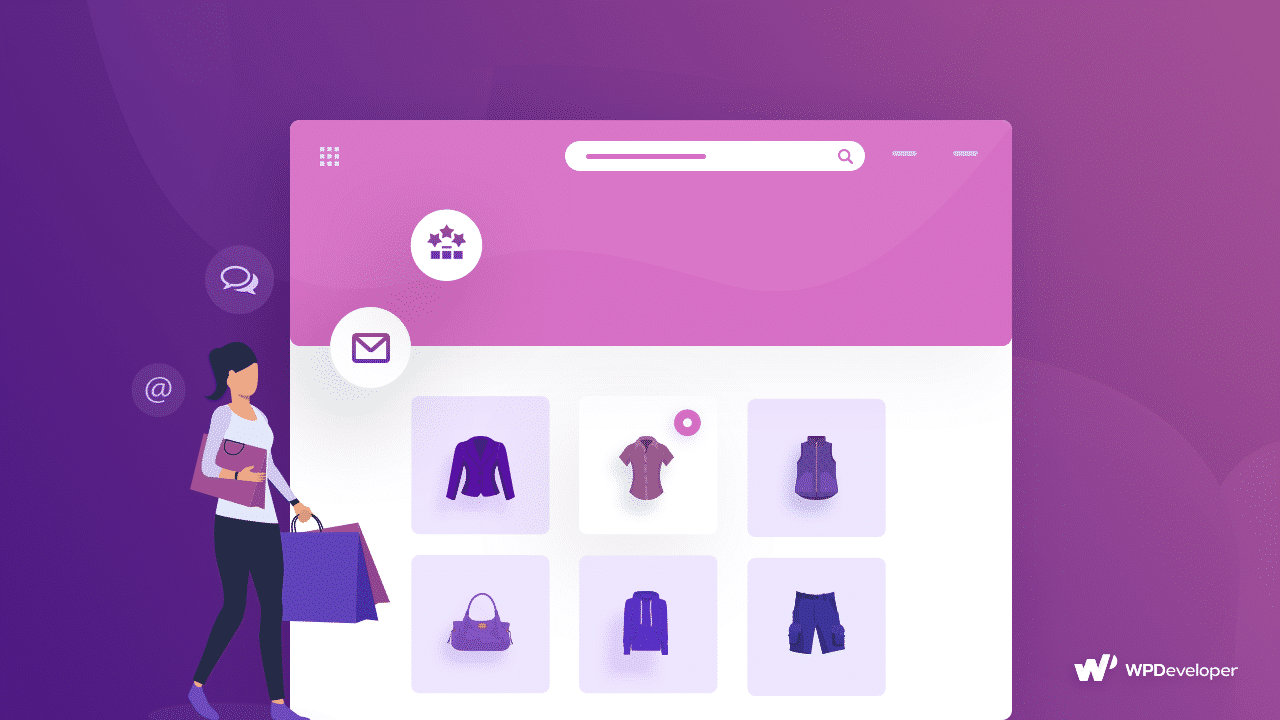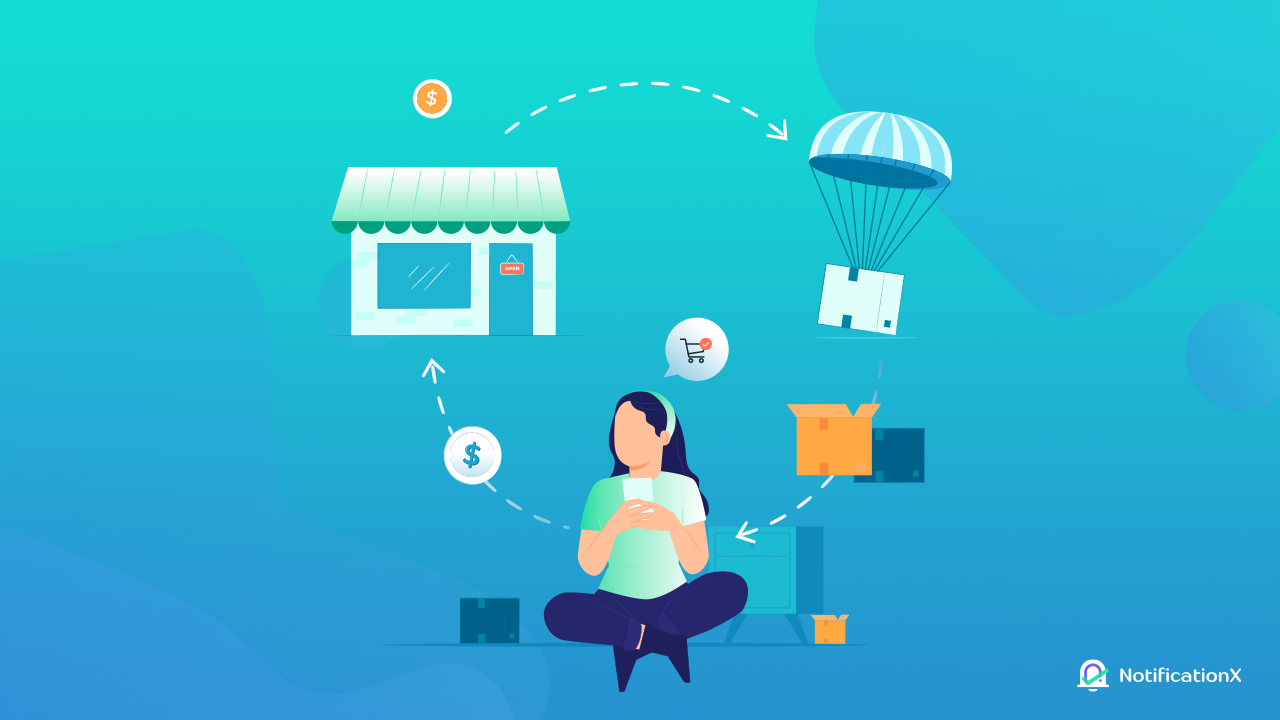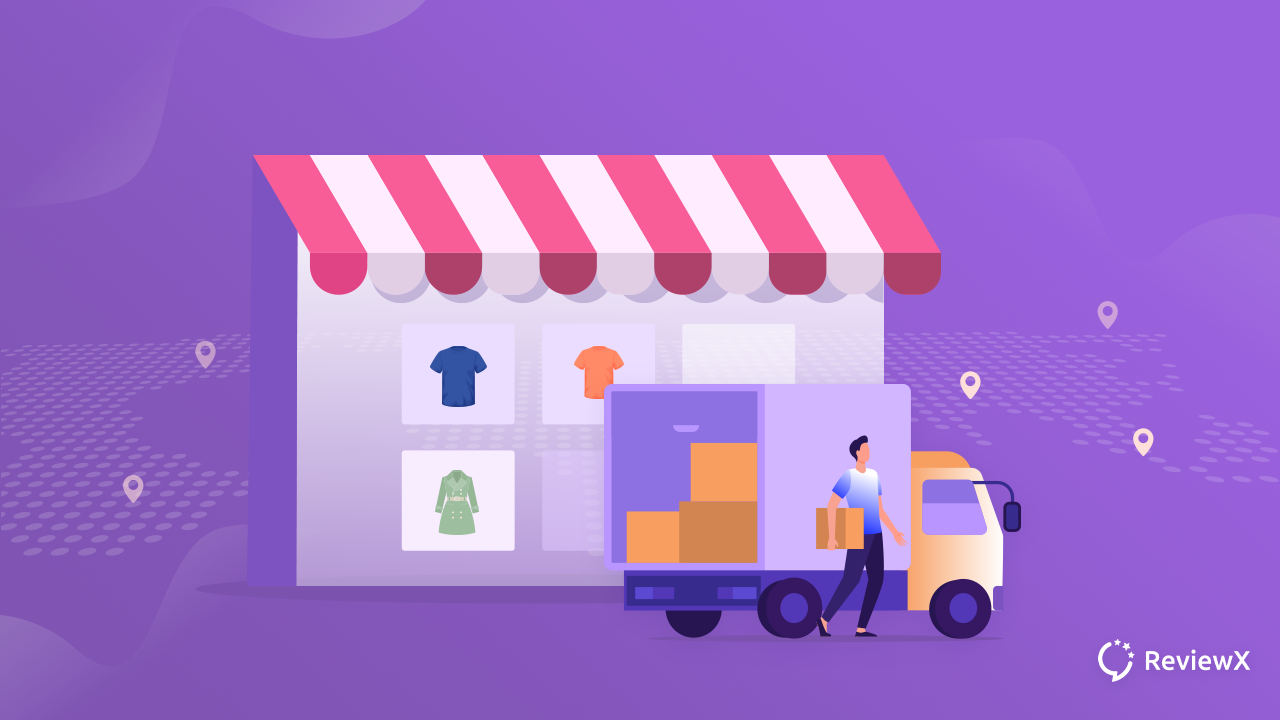
Types of eCommerce Business Models That Get Successful In 2023
- Published
- ReviewX Team
Planning to kickstart your own online startup business or take your existing venture to newer levels of success? Then applying the correct eCommerce business model should be one of your first priorities. Nothing can make your business shine nearly as effectively as a well-planned strategy.

And to help you out to build your company with the right eCommerce business model, in this blog, we will give you a complete walk-through of explaining what it is, how many types there are, and how you can choose the right one for yourself this 2023. So without further ado, let’s dive right in.
Understanding What Is An Ecommerce Business Model
Let’s off with the very basics – understanding what a business model is and how many types there are. Well, simply put, an eCommerce business model refers to how your business operates or how it is structured to reach customers online, sell products and services, and drive conversions effectively.
Finding the correct eCommerce business model involves two layers. The first layer specifies how you’re going to set up your business – who you’re selling to and how you’re going to position what you have to sell. The next step is to determine your e-commerce business strategy, or how your company intends to attract and retain customers, as well as how they will engage with your goods.
There are several types of e-commerce business models that allow different types of businesses to effectively position themselves in the market and reach out to their customers. Traditionally, there are 4 major types of eCommerce business models that you can choose from:
🎯 Business-to-Business (B2B)
🎯 Business-to-Consumer (B2C)
🎯 Consumer-to-Consumer (C2C)
🎯 Consumer-to-Business (C2B)
In order to find the right eCommerce model for your business, you need to define two things. You must first determine who you will sell to, and then decide how you will position your product or services to the customers. Then, you can figure out an eCommerce business strategy that’s perfect for you. But more on this later – first, let us dive right into the business models and find which one suits your ideas the best.
Major Traditional eCommerce Business Models Explained
Let’s start our guide by explaining the 4 major eCommerce business models that most companies and organizations traditionally follow and take inspiration from:
🎯 Business-to-Business (B2B)
The first business structure that we will define is structured just as its name suggests – Business-to-Business (B2B). It’s where a business sells its goods and services to other companies. Sometimes the buyer is the end-user, but often the buyer resells to the consumer. In other words, a B2B business website sells its items to an intermediate buyer, who then sells them to the end customer.
However, in general, the types of products sold under this business model can include anything that improves another business’ operations. And so, we can say that B2B transactions typically have a longer sales cycle, larger order value, and more repeat purchases.
One of the best examples of a B2B business is a software company, like WPDeveloper, for example. It sells software and WordPress plugins that can be used to directly benefit another business website online. But you can also think of wholesaler businesses as an example if you prefer.
🎯 Business-to-Consumer (B2C)

The next business model is the Business-to-Consumer (B2C) eCommerce model. And just like the previous one we mentioned, the name of this business type itself explains that this is the business model where a business sells products online directly to end-users or consumers. Each transaction takes place directly between the business and its customers, like you or me.
The B2C model is the most common business model these days and comes with many unique and innovative ideas under its belt – selling products as well as services to its customers. And the decision-making process for a B2C purchase is much shorter than a business-to-business (B2B) purchase and thus has much shorter sale cycles, lower average order values, and fewer recurring orders.
If you’re looking for an example of a B2C company, look no further than some of the biggest names in the world today, like Amazon, eBay, Alibaba, H&M, and more. These are businesses that not necessarily are online-based only, and can have real stores that you can visit too. But the overall idea remains the same, these are eCommerce businesses with websites that regular consumers can easily visit and purchase their preferred products by themselves.
🎯 Consumer-to-Consumer (C2C)
Changing the type of business structure and strategies, next on our list, we have a Consumer-to-Consumer business model where one consumer makes and sells a product to another consumer directly. It is sometimes referred to as an online marketplace system too, as it connects consumers to exchange their own goods and services.
C2C firms gain from the self-propelled growth of motivated buyers and sellers, but quality control and technology maintenance are significant challenges that are usually faced. But it helps regular consumers to put their information on websites, like Amazon or eBay, that follow the C2C eCommerce business model and sell their personal assets like residential properties, vehicles, furniture, and so on. Another consumer surfing the website can then directly reach out to the seller and purchase from them.
🎯Consumer-to-Businesses (C2B)
The last type of major traditional eCommerce business model is Consumer-to-Business (C2B). This is where a consumer, or individual entrepreneur, sells their products or services to businesses. While not commonly thought of, because many organizations throughout the world employ outsourcing services to improve their performance or find working with freelancers useful, the C2B eCommerce model will continue to grow in popularity in the upcoming years.
A consumer (or an entrepreneur or freelancer) approaches a website to sell a particular product or service in this model. He then makes an estimate of how much he wants to spend on the item in question to sell to the website. Alternatively, clients assign tasks to freelance workers under the C2B model and the majority of these clients are businesses.
Upwork is one of the best examples of the Customer-to-Business eCommerce models. Individuals who are experts in specific fields can use this platform to sell their services to businesses.
5 Successful eCommerce Revenue Models To Choose From
After you’ve figured out what traditional eCommerce business models are like, the next thing to consider is how you’ll handle inventory management and product procurement. Not every company makes its own products or manages its own inventory and warehouses. Before choosing an eCommerce revenue model that suits you, you should explore each option.
Here are 5 of the most common approaches businesses are using today:
- Dropshipping
- Wholesaling And Warehousing
- Private Labeling & Manufacturing
- White Labeling
- Subscription Model
The Drop Shipping Revenue Model Approach:

Dropshipping is the simplest type of eCommerce business model which is basically an order fulfillment method. It frees the seller from managing inventory, warehousing stock, and dealing with packaging as these are handed down to a third-party supplier team. So you will be able to focus on their front-end customer experience and building their customer network completely.
However, while using this business model brings you lots of advantages, there are also some issues that you might face. If the customers receive damaged products, they will not be blaming the third party team, instead, they will point their fingers at your business and ask for compensation. So, you need to be very careful if you choose this type of model for your business.
The Wholesaling And Warehousing Approach:
The initial investment in a Wholesaling and Warehousing eCommerce business model is quite significant – you must manage inventory and stock, keep track of customer orders and delivery information, and invest in warehouse space. Which is quite the opposite of the Dropshipping style of business model.
Businesses that use a wholesaling approach for their organizations take care of everything except the product’s manufacture. If you choose this business model, you will place orders directly with suppliers and will be in charge of the warehouse, inventory and stock management, and customer order and delivery tracking.
The Private Labeling And Manufacturing:
Companies that do not have their own factories or just create their startup for experimentation can choose for the Private Labeling and Manufacturing business model. These companies who manufacture their products and services off-site hand over the plans or prototypes to a contracted manufacturer, who then builds the product following client specifications and distributes it directly to the customer, a third party like Amazon, or the company selling the final product.
On-demand manufacturing allows you to swiftly switch suppliers if product quality issues arise, which is a major benefit of this revenue model. The initial expenses are low, and if you plan to develop your own manufacturing facilities later, this is a good approach to test a new product or concept.
The White Labeling eCommerce Revenue Model:

With White Labeling business models, your organization will be branding and selling a product under its own name and logo, but the products will be manufactured and purchased from a third-party distributor. These third-party companies design your package and then sell the product to you. White labeling can help you increase brand awareness, and take benefit of the distributor’s experience and skills.
One problem with white labeling is keeping up with the demand. Since you will be ordering a certain number of products from the manufacturer, you’re stuck with whatever quantity you order, and cannot fulfill customer demands if your products are popular. And again, if you over-order, you will most probably go into a loss.
Finally, The Subscription Model:
These eCommerce business models operate on a subscription model, in which consumers receive a box of products at predetermined intervals, which can be weekly, monthly, and yearly. The main benefits of subscription-based eCommerce are connected to income stability for your company. Because most subscription-based eCommerce firms are in the beauty and fashion industries, your options may be limited.
Choosing The Right eCommerce Model For Your Business
Finally, let’s talk about how you will plan to set the right eCommerce model for your business. Below, we have written a couple of questions that you can ask yourself when determining the perfect model.
Who Is Your Customer?
First, choose your target customer base, what you are planning to sell, and consider what the consumer expectations will be. If you can understand their requirements, you will be able to uncover ways to improve your business strategies or save money, you’re more likely to succeed.
What Is Your Positioning In The Market?
You might have exceptional product ideas, but you need to understand how well it will do in the market among other competitors. So, make sure to examine your competition and analyze the prices in order to make your products and services stand out to your customers.
Bonus: Top eCommerce Niches That Will Succeed In 2023
And with that, we end our guide on eCommerce business models but before we leave, we want to bring you a list of the best eCommerce niches that are most likely to dominate the market in 2023. This is the perfect time for you to explore all the niches that are predicted to grow big and profitable in the upcoming year.

Hope this blog was useful in helping you understand and choose which business model that will be successful this year. If you liked this blog then leave a comment below. We love hearing your thoughts on our blogs. Don’t forget to subscribe to our blog and join our friendly Facebook community to get the latest updates.
Increase sales with customer reviews
Showcasing customer experiences helps build trust and drive higher sales.
Related Articles

Best Tool for WordPress Web Agencies
Finding the best tools for WordPress agencies can feel overwhelming – last Tuesday, I watched one of my

Best Cyber Monday Deals of 2025 for WordPress Web Agencies
Looking for the best Cyber Monday deals of 2025 for WordPress web agencies? You’re in the right place.

Judge.me is Leaving WordPress – Here’s the Best Judge.me Alternative (and How to Migrate Easily)
If you’re using Judge.me on your WooCommerce store, there’s an important update you can’t ignore: Judge.me is officially